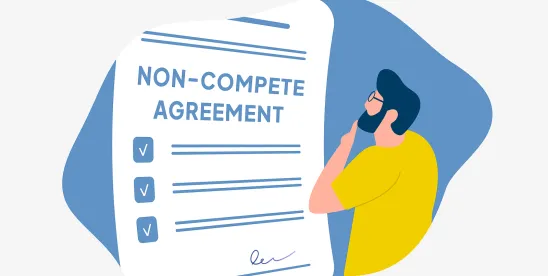On April 23, 2024, the Federal Trade Commission (“FTC”) voted 3-2 to issue a proposed final rule (“Final Rule”), which, absent a successful legal challenge, will ban most noncompete agreements in the United States.
Despite more than 26,000 comments from the public, the Final Rule does not narrow the rule first proposed by the FTC in January 2023 (“Proposed Rule”), but in many ways, expands the scope of what is considered an impermissible noncompete. The Final Rule will take effect 120 days after its publication in the Federal Register, after which employers will be expected to comply with its requirements. The FTC is already facing numerous legal challenges to its authority to issue the Final Rule, which may delay, limit or prohibit its implementation.
Key Provisions of the Final Rule
The vast majority of the FTC’s 570-page publication concerning the Final Rule consists of a summary setting forth the FTC’s rationale and responses to public comments, followed by just 8 pages containing the text of the Final Rule itself.
- Existing Noncompetes: After the Final Rule’s effective date, existing noncompetes are unenforceable as to all workers other than senior executives. § 910.2. Senior executives are workers who: (i) receive total annual compensation of at least $151,164 per year; and (ii) are in a “policy-making position” (discussed below). § 910.1.
- New Noncompetes: Employers may not enter into new noncompetes with workers (even senior executives) after the Final Rule’s effective date. § 910.2.
- Notice: Employers must provide notice to current and former employees that their noncompetes are unenforceable by physical or electronic means. § 910.2(b). The Final Rule establishes a safe harbor for employers who use the model notice language.
- Sale of Business Exception: Noncompetes may be entered into pursuant to a bona fide sale of a business entity, of a person’s ownership interest in a business entity, or of all or substantially all of a business entity’s operating assets. § 910.3(a).
Inclusions/Exclusions From “Noncompete”
A “noncompete” is broadly defined as a term or condition of employment that “prohibits,” “penalizes,” or “functions to prevent” a worker from seeking or accepting work, or operating a business, in the United States, with a different person after the conclusion of the employment that includes the term or condition. § 910.1.
As explained in the summary section of the Final Rule, the inclusion of the term “penalizes” is intended to cover liquidated damages provisions—where a worker may be required to pay a monetary penalty if they engage in a competing business after termination—as well as forfeiture for competition provisions—which impose adverse financial consequences on a former employee should they seek or accept competing work after termination. (p. 76.) The Final Rule goes further, noting that a separation agreement in which severance is contingent upon not competing also “penalizes” a worker. (p. 77.)
The Final Rule explains that a “term or condition of employment” includes both express contractual terms as well as workplace policies, whether written or oral, which may include restrictions in employee handbooks. (p. 91.)
The definition of “noncompete” would not include restraints during a worker’s employment. A noncompete also generally does not include non-disclosure agreements, non-solicitation agreements, or training-repayment agreements, unless their terms “function to prevent” competition, which can occur if a term or condition is “so broad or onerous that it has the same functional effect” as an express noncompete. (p. 80-82.)
Notably, according to the summary to the Final Rule, requiring the repayment of a bonus if a worker leaves before a certain period of time would not be considered a noncompete if the repayment amount is no more than the bonus that was received, and is not tied to who the worker may work for after they leave their job. (p. 82-83.)
Similarly, a “garden leave” provision under which a worker would still be employed and continue to receive their salary and benefits would not be considered a noncompete. (p. 83.)
The Final Rule’s definition of the term “worker” did not change substantially from the Proposed Rule, and continues to include externs, interns, volunteers, apprentices, and independent contractors, but not a franchisee in the context of a franchisee-franchisor relationship, regardless of such worker’s title or status under any other applicable law. § 910.1. The FTC did note, however, that it declined to specify that a “worker” includes “an owner who provides services to or for the benefit of their business because the definition already encompasses the same.” (p. 101.) Under this interpretation, partners in partnerships may well be considered “workers” under the Final Rule.
Senior Executives
In a notable change from the Proposed Rule, the Final Rule allows existing noncompetes with “senior executives” to remain enforceable. Even “senior executives,” however, cannot enter into enforceable noncompetes after the Final Rule’s effective date. A “senior executive” must have received at least $151,164 in total annualized compensation in the preceding year, which includes salary, commissions, and nondiscretionary bonuses or other nondiscretionary compensation. § 910.1. A “senior executive” must also have a “policy-making position,” which is defined as: (i) a business entity’s president, chief executive officer or the equivalent; or (ii) or any other officer or natural person who has “policy-making authority” for the business entity. § 910.1.
“Policy-making authority” is the “final authority to make policy decisions that control significant aspects of a business entity or a common enterprise,” but does not include “authority limited to advising or exerting influence over such policy decisions, or having final authority to make policy decisions for only a subsidiary or affiliate of a common enterprise.” § 910.1. The summary to the Final Rule clarifies that “policy-making authority” is assessed based on the business as a whole, rather than for a particular office, department, or other sublevel. (p. 272.) As an example, the head of a marketing division in a manufacturing firm who only makes policy decisions for the marketing division, where such decisions do not control significant aspects of the overall business, would not be a “senior executive.” (p. 272.) Nor would the head of a hospital’s surgery practice or a physician who runs an internal medical practice that is part of a hospital system, if they are decision-makers only for their particular division. (p. 273.)
Similarly, an individual who only has authority over one component of a coordinated common enterprise and possess final authority only for that subsidiary or affiliate is not a “senior executive.” (p. 273-74.) The Final Rule notes that such individuals who “head a subsidiary or affiliate of a common enterprise are similar to department heads; the senior executives controlling the entire common enterprise control those individual subsidiaries and affiliates,” and ostensibly, “do not have sufficient bargaining power to avoid exploitation and coercion and are unlikely to have bargained in connection with non-competes.” (p. 273.)
Notice to Workers
Rather than requiring employers to formally rescind existing noncompetes, the Final Rule provides that it will be sufficient to inform workers that they are no longer bound by their noncompetes. By the Final Rule’s effective date, employers must provide written notice to both current and former workers that their noncompetes are not enforceable. § 910.2(b)(1). Notice may be provided to the worker in person, sent to the worker’s physical or email address, or by text to their phone number, but need not be provided if the employer has no record of any of the above for a particular worker. § 910.2(b)(2) & (3). The Final Rule offers sample model language that will serve as a safe harbor for any employer who uses it.
§ 910.2(b)(4) & (5).
Exceptions
The Final Rule enumerates three exceptions to its broad prohibition of noncompetes. First, it adopts a sale-of-business exception that permits noncompetes to be used when entered into pursuant to a bona fide sale of a business entity, of a person’s ownership interest in a business entity, or of all or substantially all of a business entity’s operating assets. § 910.3(a). The Final Rule omits the Proposed Rule’s requirement that the seller possess substantial ownership of at least 25% in the entity to be sold. The exception thus applies to even small shareholders, so long as the sale is “bona fide” or made in good faith, generally between two independent parties at arm’s length after a reasonable period of negotiation. (p. 342.)
Second, due to concerns regarding retroactivity, the Final Rule provides that it does not preclude enforcement of noncompetes where the cause of action accrued prior to its effective date.
§ 910.3(b).
Third, to address circumstances in which an employer’s enforcement or attempt to enforce a noncompete may be protected by the First Amendment, the Final Rule provides for a “good-faith” exception, where it is permissible for an employer to “enforce or attempt to enforce a non-compete clause or to make representations about a noncompete clause where a person has a good-faith basis to believe that [the Final Rule] is inapplicable.” § 910.3(c). The FTC clarifies that “the absence of a judicial ruling on the validity of the final rule does not create a good-faith basis for non-compliance. If the rule is in effect, employers must comply.” (p. 352.)
Key Takeaways
Despite commentary and requests for clarification from trade groups and other stakeholders, the Final Rule adopts the broad provisions of the Proposed Rule nearly in full, including many of its more critiqued aspects. One chief concern is key employees who with knowledge of an employer’s confidential information and trade secrets should remain subject to noncompetes to minimize legitimate risks to employers. Also, ambiguity remains regarding what types of contractual provisions will be considered to “penalize” competition or serve as “functional” noncompetes.
It is certain, however, that the Final Rule will attract numerous legal challenges in the coming days and months, and the U.S. Chamber of Commerce and another entity have already filed lawsuits. These challenges have targeted and will continue to target the FTC’s authority to issue the Final Rule under sections 5 and 6(g) of the FTC Act, as well as whether it passes muster under the major questions doctrine. Such challenges are likely to at least delay implementation of the Final Rule, raising questions regarding when—and what provisions—of the Final Rule will ultimately take effect. Notably, the Final Rule provides that any portions held to be invalid or unenforceable will be severed, leaving the remainder intact, but it is unclear if this feature will survive judicial scrutiny.
Thus, employers should consider possible alternatives to protect their trade secrets and confidential information, starting with non-disclosure agreements and non-solicitation agreements, as well as methods of encouraging individuals to remain employed.







 />i
/>i
